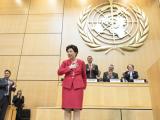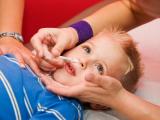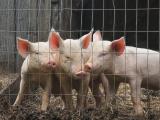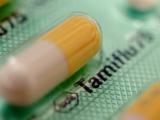Jan 30, 2013 (CIDRAP News) – A large study of narcolepsy background rates in six European countries before and after 2009 H1N1 pandemic vaccine campaigns confirmed increases in Finland and Sweden—the two countries that first reported the problem—but also detected a rise in Denmark.
The findings, from one of the largest known studies of narcolepsy epidemiologic patterns, are the latest piece of the puzzle for European health officials who have been investigating a link between narcolepsy and vaccination with Pandemrix, a monovalent vaccine made by GlaxoSmithKline (GSK) that contains the AS03 adjuvant.
The increase in vaccine-related narcolepsy cases surfaced in August 2010 and appeared to be limited to children and adolescents, but over the course of the investigations in Europe, French and Irish researchers found a significant link between Pandemrix and narcolepsy in adults who receive the vaccine, as well.
Pandemrix was the most common product used in European countries during the pandemic The United States didn't use it, but Canada and Brazil used a similar GSK vaccine that contained the same adjuvant.
The study, published in the February 6 issue of Vaccine, was conducted by members of the Vaccine Adverse Events Surveillance and Communication (VAESCO) consortium based on a request from their partners at the European Centre for Disease Prevention and Control (ECDC).
The group looked at narcolepsy diagnosis rates from 2000 through 2010 in six countries that have large, linked automated healthcare databases: Denmark, Finland, Italy (Tuscany and Emilia Romagna regions), the Netherlands, Sweden, and the United Kingdom.
Finland and Sweden were the only two countries participating in the study that recommended the pandemic vaccine for the entire population. The others recommended the vaccine mainly for people in certain risk groups, such as those with underlying medical conditions.
The investigators identified 2,608 narcolepsy cases in nearly 280 million person-years of follow-up, with a pooled incidence rate of 0.93 (95% confidence interval [CI], 0.90 to 0.97) per 100,000 person-years. Narcolepsy peaks were found between ages 15 and 30 years, with slightly more women affected than men, a pattern that was most pronounced in women of childbearing age.
Narcolepsy incidence in children ages 5 through 19 increased after the start of pandemic vaccine campaigns in Finland and Sweden, consistent with previously reported safety signals. However, the new study found increases in two Danish age-groups, children ages 5 to 19 and adults ages 20 to 59, even though Denmark had relatively low vaccine coverage.
Researchers also found a narcolepsy increase after September 2009 in Finnish adults older than age 60.
The group concluded that though the background rates that they found don't conclusively prove a link between the pandemic vaccine and narcolepsy, the information is useful for public health assessment.
They noted that although the signals in Finland and Sweden matched the background data they found, mismatches with age-specific diagnostic rates and pandemic vaccine coverage rates indicates that factors apart from the vaccine might also have a connection to the rise in narcolepsy cases that health officials detected.
"Thus, additional factors that could explain an increase in incidence of diagnosis of narcolepsy should be considered for formal hypothesis testing," the investigators wrote.
Wijnans L, Lecomte C, de Vries C, et al. The incidence of narcolepsy in Europe: before, during, and after the influenza A(H1N1)pdm pandemic and vaccination campaigns. Vaccine 2013 Feb;31(8);1246-54 [Abstract]
See also:
Sep 12, 2012, CIDRAP News story "French study finds narcolepsy link to H1N1 vaccine in adults"
















